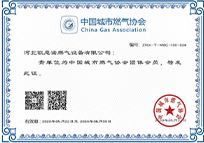
Nov . 06, 2024 11:31
Back to list
Natural Gas Pressure Regulation Station Enhancements for Efficient Distribution and Safety Management
Natural Gas Pressure Reducing Stations An Integral Component of Gas Distribution Systems
Natural gas is a crucial energy resource, powering homes, industries, and power plants worldwide. However, to ensure its safe and efficient delivery, managing its pressure during transportation is essential. This is where natural gas pressure reducing stations (PRSs) come into play. These facilities not only help manage the pressure of natural gas but also play a critical role in ensuring the reliability and safety of gas distribution networks.
Understanding Pressure Reducing Stations
A natural gas pressure reducing station is a facility designed to lower the pressure of natural gas from high levels that are typical in transmission lines to levels suitable for local distribution. These stations are strategically located throughout the gas supply network, often at the intersection of transmission and distribution systems.
Natural gas is transported through long pipelines at high pressures, typically ranging from 500 to 1,500 psi (pounds per square inch) depending on the distance and requirements of the transport infrastructure. However, this high pressure is not suitable for direct use in residential or commercial applications, where pipe pressure levels are usually between 2 to 60 psi. Thus, pressure reducing stations serve as the intermediary, ensuring that the gas delivered to end-users is at safe operational levels.
Components of a Pressure Reducing Station
A typical PRS consists of several key components that work together to safely reduce gas pressure. These include
1. Pressure Regulators At the heart of any PRS are pressure regulators that automatically adjust the pressure of natural gas to desired levels. These can be equipped with various mechanisms, such as diaphragm or spring-loaded systems, to ensure precise regulation.
2. Safety Valves Safety is paramount in gas distribution, and PRSs are equipped with safety valves that allow for quick release of excess pressure if needed. This helps prevent over-pressurization, which could lead to catastrophic failures.
3. Filter Systems Natural gas can contain impurities that may damage downstream equipment. Filters installed within a PRS help remove contaminants, ensuring that the gas remains clean and safe for use.
natural gas pressure reducing station

4. Flow Meters Monitoring gas flow is essential for operational efficiency, and flow meters provide real-time data on the amount of gas being distributed.
5. Control Systems Modern PRSs often incorporate advanced control systems that allow for the remote monitoring and management of pressure levels and flow rates. This capability enhances operational efficiency and safety.
Operational Importance
The operational importance of pressure reducing stations cannot be overstated. First and foremost, they help maintain the integrity of distribution pipelines by preventing excessive pressure that could lead to leaks or ruptures. In addition, pressure regulation is essential for the efficient operation of appliances that depend on natural gas, such as heaters, stoves, and industrial machinery. Proper pressure levels ensure that these devices function safely and efficiently, minimizing the risk of malfunctions.
Moreover, PRSs play a critical role in emergency preparedness and response. In the event of an emergency, such as a pipeline rupture or extreme weather, the ability to quickly adjust pressure levels can prevent disaster. For instance, during severe storms, PRS operators can temporarily reduce pressure in the pipeline to minimize the risk of gas leaks.
Environmental Considerations
Natural gas is often viewed as a cleaner alternative to other fossil fuels; however, safety and environmental concerns must be addressed. Pressure reducing stations must be designed and maintained to minimize the risk of methane leaks, which is a potent greenhouse gas. Implementation of regular inspections and adherence to regulatory standards ensures that PRSs operate effectively and minimize environmental impact.
Conclusion
Natural gas pressure reducing stations are vital components of gas distribution systems, ensuring that high-pressure natural gas is transformed into a safe and usable commodity for consumers. By expertly managing gas pressure through sophisticated technologies and practices, PRSs enhance the reliability, safety, and efficiency of natural gas distribution. As the demand for natural gas continues to grow, the importance of PRSs will only increase, making them essential for a sustainable energy future. Whether through ongoing innovation or strict regulatory compliance, ensuring the optimal functioning of these stations remains a priority in the ever-evolving landscape of energy supply.
Latest news
-
Safety Valve Spring-Loaded Design Overpressure ProtectionNewsJul.25,2025
-
Precision Voltage Regulator AC5 Accuracy Grade PerformanceNewsJul.25,2025
-
Natural Gas Pressure Regulating Skid Industrial Pipeline ApplicationsNewsJul.25,2025
-
Natural Gas Filter Stainless Steel Mesh Element DesignNewsJul.25,2025
-
Gas Pressure Regulator Valve Direct-Acting Spring-Loaded DesignNewsJul.25,2025
-
Decompression Equipment Multi-Stage Heat Exchange System DesignNewsJul.25,2025

